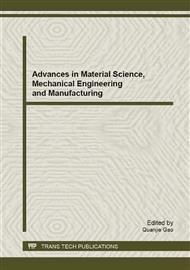p.306
p.311
p.315
p.319
p.323
p.329
p.334
p.339
p.345
Broadband Dielectric Spectroscopy Analysis of Dielectric Properties of Barium Titanate Ceramics
Abstract:
The complex dielectric behaviors of ferroelectric barium titanate (BT) ceramics were investigated. The dielectric properties were studied as a function of temperature and frequency using broadband dielectric spectrometer. The results show that the maximum value of dielectric constant occurs at 500nm BT ceramics, which is approximately 7,500; the dielectric loss is lower than 0.03 with the temperature varying from 225 K to 450 K. Dielectric constant and dielectric loss experience three dielectric peaks corresponding to rhombohedral to orthorhombic, tetragonal and cubic transitions. With the frequency ranges from 1 MHz to 1 GHz, the dielectric relaxation is apparently present. The relaxation process obeys Cole-Cole relaxation model at high temperature and conforms to Debye relaxation model when the temperature far lower than Curie temperature. The relaxation time is the order magnitude of ~10-9 s obtained by Havriliak-Negami function fitting, which is very consistent with theoretical calculation.
Info:
Periodical:
Pages:
323-328
Citation:
Online since:
August 2013
Price:
Сopyright:
© 2013 Trans Tech Publications Ltd. All Rights Reserved
Share:
Citation:


